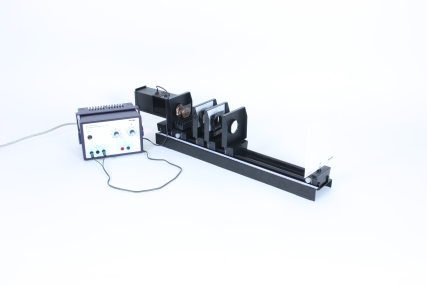Principle
Most conventional plastic films retain lasting inherent tensions from the stretching or rolling processes they undergo during manufacture. These tensions renderthem optically anisotropic. Hence, the Iight velocity in such foils is dependent an direction, i.e., a light beam striking the surface of such materials is split into two parts known as the ordinary and the extraordinary ray. lf such foils are positioned between two polarization filters, coloured images appear in the visual field behind the analyzer, in which the colours and their intensity are dependent on the mutual angle of rotation of the polarization filters, on the stretch direction of the foils and on their layer thickness.
This is the learning objective of the experiment. The students should also realize - with the aid of the film specimen (comp. Fig. 2) - that the two components, into which the incident natural light is split, are polarized in a mutually perpendicular plane and have symmetrically arranged, complementary colours.
Benefits
- Multifunctional light box - All-in-one: Can be used for geometric optics on the table, colour mixing and on an optical bench
- Extension with others sets at anytime, no additional light sources needed, recognition value for students
Tasks
Insert transparent film into the space between two crossed polarization filters and investigate the phenomena which occur when, either the foil, or one of the filters is rotated.

